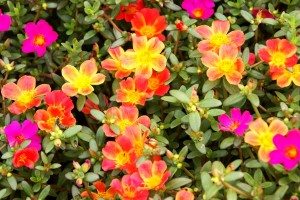PURSLANE
April 10th, 2012 → 1:10 am @ Shanti
“Vitamins and minerals in fresh food”
PURSLANE

Purslane, commonly destroyed by gardeners as a weed, is a very, very good herb-come-vegetable. It has more Omega-3 fatty acids in it than some fish oils, so for the strict vegetarian, there is your way of getting them.
It is a member of the pigweed family, or the portulaca and its scientific name is indeed portulaca oleracea.
Purslane is well known in Europe and many Asian countries and its thick leaves contain a mucilaginous substance, which tastes a little sour and salty. The whole plant is edible, stems, flowers and all. It is rich in dietary fibre and low in calories. I have not seen purslane sold in shops in Australia, but if you find it, maybe in markets, make sure it is clean and fresh. Watch for mouldy spots, yellow and black patches. Do not buy them. At home, some people are lucky to have it growing in the garden and they should eat it whenever possible.
Vitamins: A, C very high, B2, B6, B1, B9, B3, B5.
Minerals: Iron, Magnesium, Manganese, Coper, Potassium, Calcium, Phosphorous, Sodium, Selenium and Zinc, all well represented.
Purslane may be eaten raw in salads or it may be juiced. When cooking, only just heat it, as a lot of value is lost in heating this vegetable too long, as in most cases of vegetable cooking. Put it in the stir-fry just for the last few minutes.
